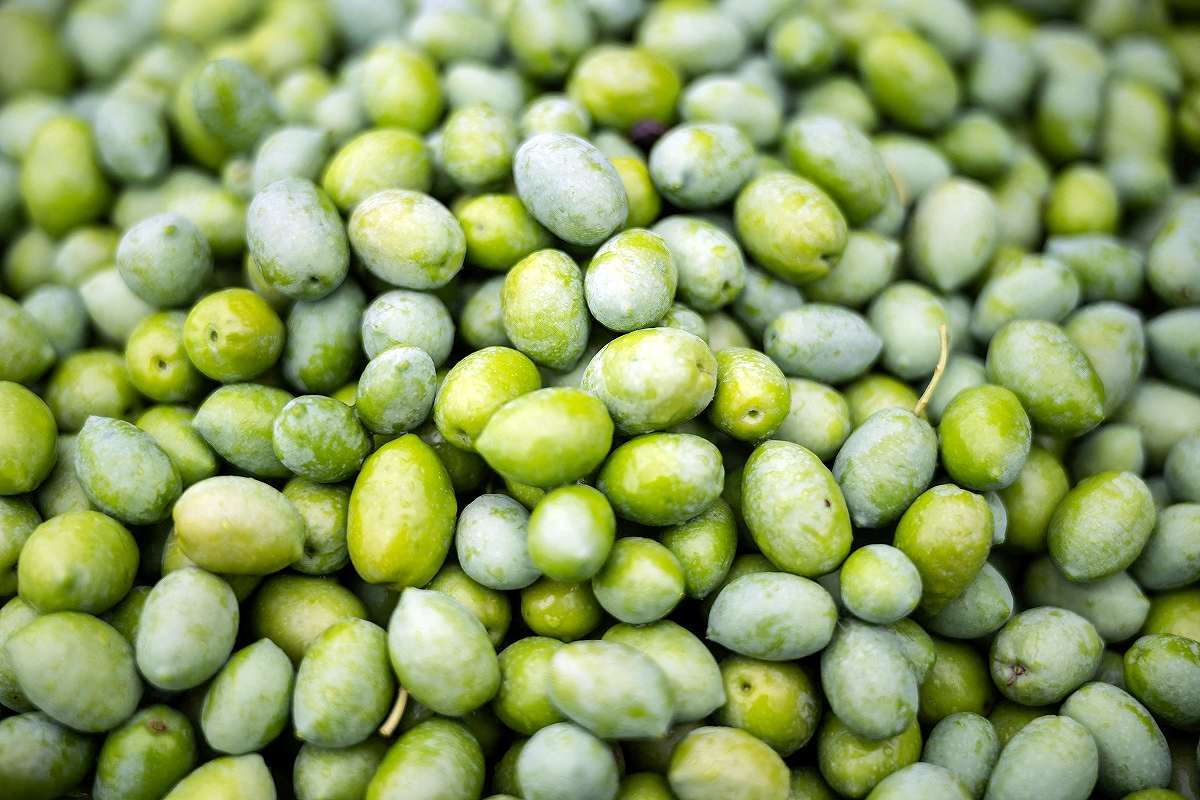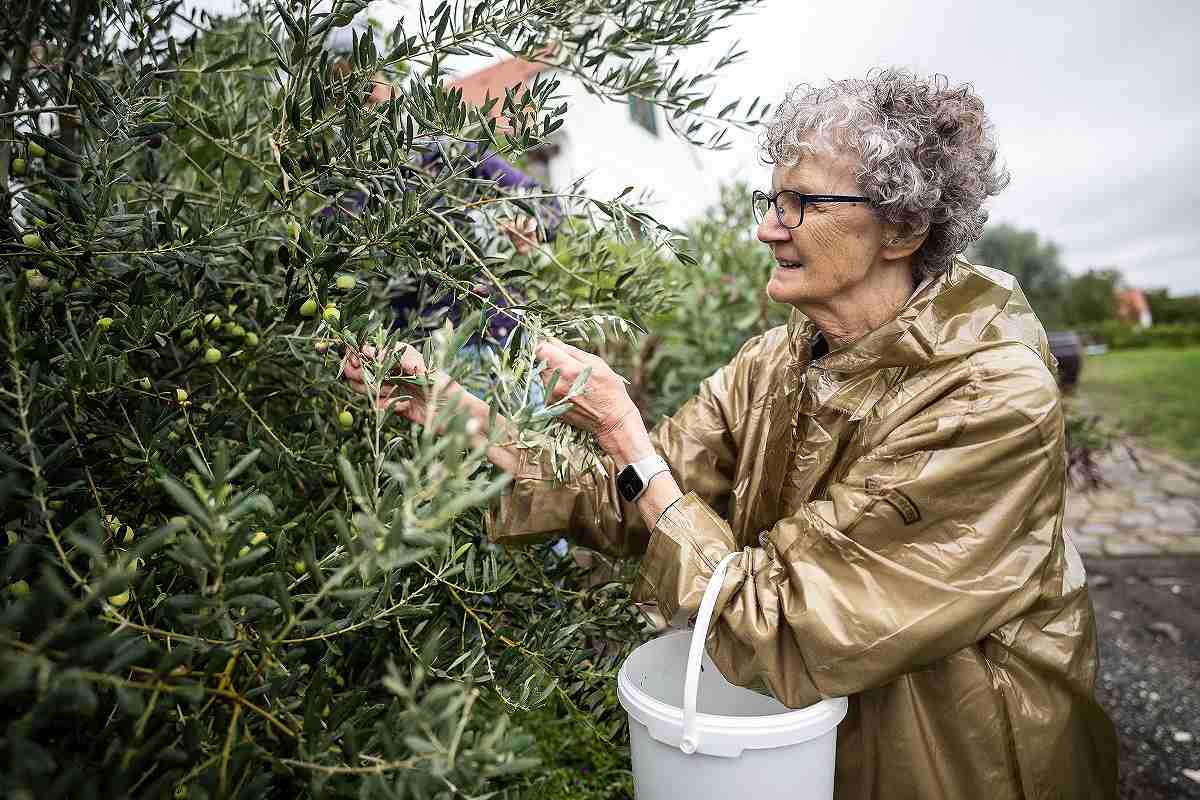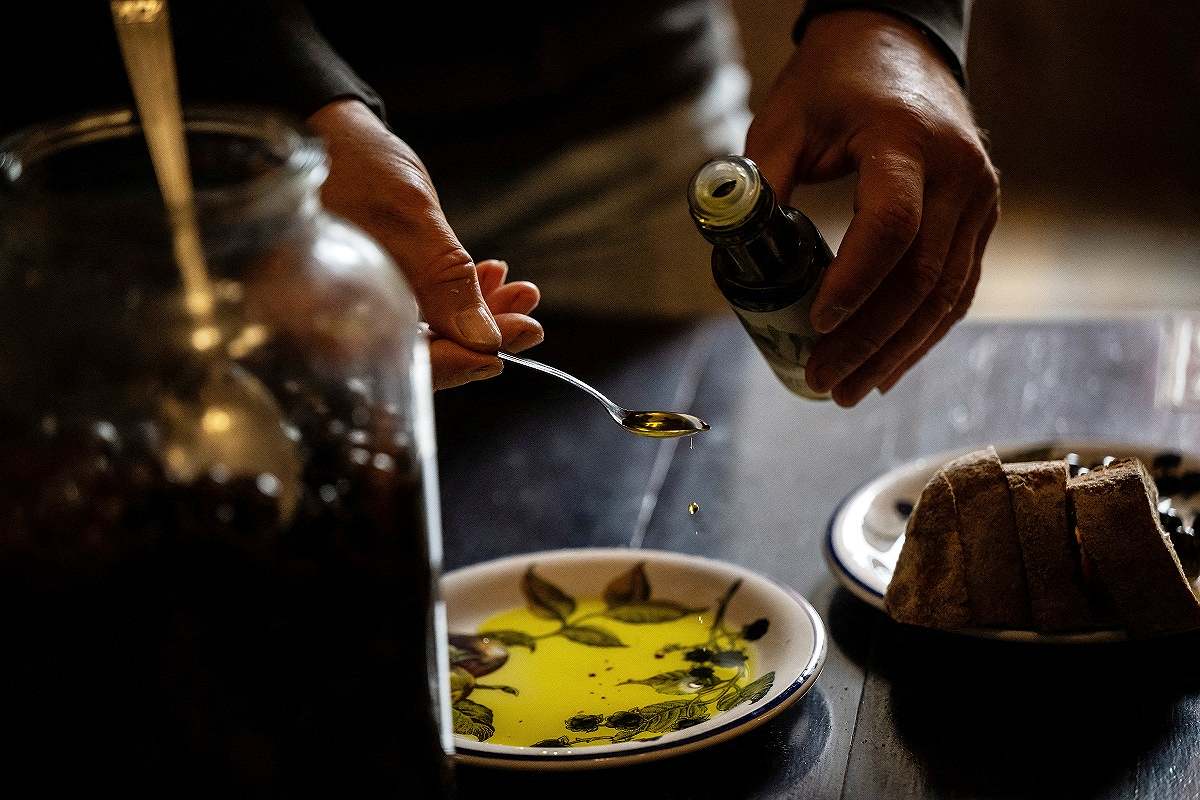
Harvested olives
15:56 JST, October 19, 2024
HEGYMAGAS, Hungary (Reuters) — Wine maker Csaba Torok, who grows olives on Hungary’s warm southern slopes near Lake Balaton, believes his trees from southern Europe have found a successful new home as Europe’s climate gets warmer.
Torok, 55, got his first three small olive trees from Spain around 2008. Two froze to death the first winter but one survived, prompting Torok to buy around 200 more over the years to plant in his vineyard on Hegymagas, a volcanic butte formation with sunny slopes, ample rain and rich soil.
“I see these trees as an integral part of the future landscape here,” Torok said, as he harvested the olives with friends, noting the local microclimate increasingly suits the trees.
He takes his hand-picked olive crop to neighboring Slovenia where his virgin olive oil is made and which he sells for 4,500 forints ($12.35) per 0.1 liters.


Left: A woman harvests olives in Hegymagas, Hungary, on Oct. 4. Right: Csaba Torok pours his homemade olive oil onto a plate for tasting.
As southern Europe is hit by more frequent droughts and scorching heatwaves, the areas where olive groves can flourish appear to be shifting northward, he said.
Hungary’s winters have become palpably milder over the past years. Europe is the fastest warming continent in the world, the European Environment Agency said last month, and faces a greater risk of drought in the south.
Spain, which usually supplies around 40% of the world’s olive oil, has suffered poor olive harvests in the past two years due to heatwaves and a prolonged drought, doubling olive oil prices to record levels.
Recently, the Spanish farm ministry said the first estimates for this year’s harvest indicated a recovery, with 2024-2025 olive production forecast at 1,262,300 tons, up 48% from the previous harvest.
‘Mediterranean feeling’
In southern Hungary, near the city of Pecs, Gabor Stix has been experimenting with an olive grove for years, cultivating trees for sale. Stix expects all his trees grown this year to be sold by March.
“Olive trees love this climate … One would think Hungary is not suitable for olive production, but it is,” Stix said.
Even north of Hungary, in Slovakia, people have been buying olive trees for their gardens to have a “Mediterranean feeling.” In the village of Iza, garden center owner Istvan Vass has imported 25 truckloads of olive trees from Spain this year, selling them for €300-€500 each.
As buyers arrived to choose trees, Vass warned that during the first winter the trees might suffer damage from sub-zero temperatures, but covering them helps.
“There are lots of olive trees planted outside in the gardens and they cope really well,” he said.
"Science & Nature" POPULAR ARTICLE
-

Genome Study Reveals Milestone in History of Cat Domestication
-

Big Leap in Quest to Get to Bottom of Climate Ice Mystery
-

Security Camera Footage Vulnerable to Outside Access; Investigation Finds 3,000 Pieces Exposed Online
-

Paws on Parade: Nairobi’s Dogs Dazzle at ‘Pawchella’
-

Japanese Eels Escape New Regulation in Vote at CITES Meeting, Avoiding Higher Prices for Dealers and Diners
JN ACCESS RANKING
-

Keidanren Chairman Yoshinobu Tsutsui Visits Kashiwazaki-Kariwa Nuclear Power Plant; Inspects New Emergency Safety System
-

Imports of Rare Earths from China Facing Delays, May Be Caused by Deterioration of Japan-China Relations
-

University of Tokyo Professor Discusses Japanese Economic Security in Interview Ahead of Forum
-

Japan Pulls out of Vietnam Nuclear Project, Complicating Hanoi’s Power Plans
-

Govt Aims to Expand NISA Program Lineup, Abolish Age Restriction

























